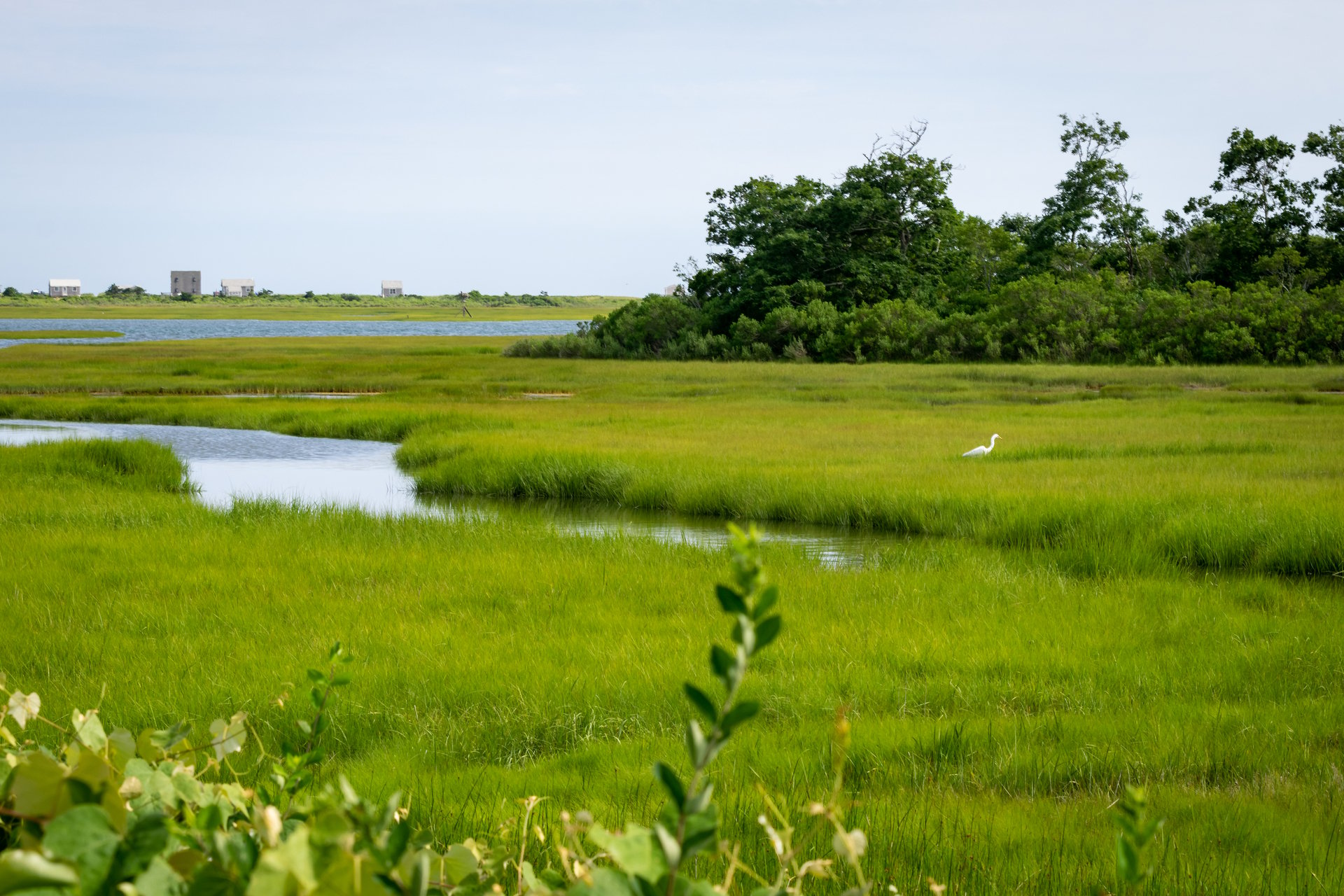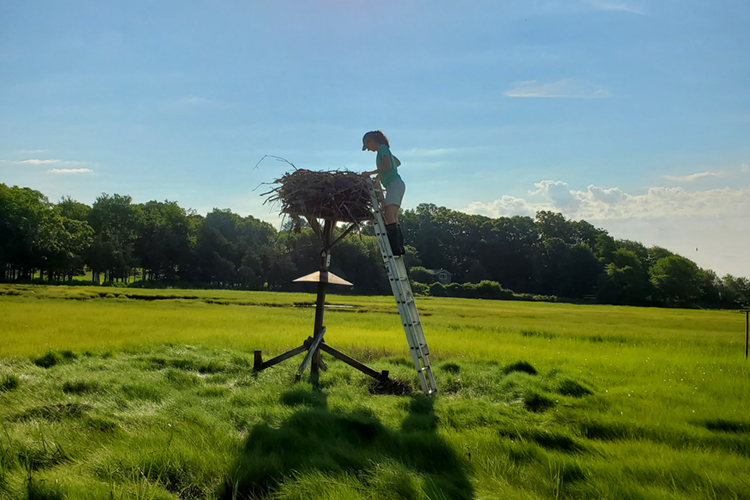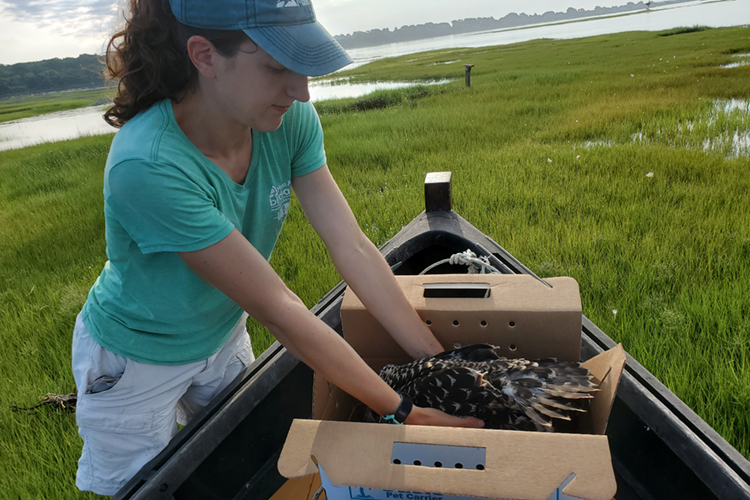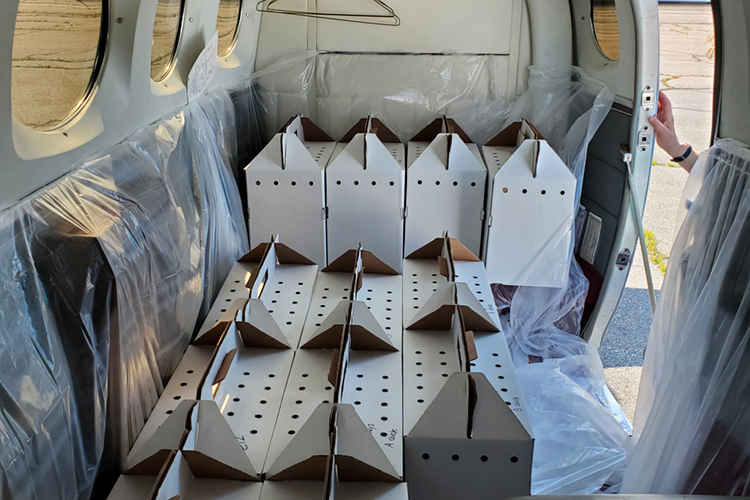Allens Pond: Osprey Translocation from Massachusetts to Illinois
August 10, 2022
This year marked the fourth year of Mass Audubon’s partnership with the University of Illinois at Springfield and the Illinois Department of Natural Resources to help restore an osprey breeding population in Illinois. While osprey in Massachusetts made a dramatic comeback following the banning of DDT and the construction of nesting platforms in the 1970s, osprey in Illinois are still a state-listed threatened species.
This project, started in 2013 by Dr. Tih-Fen Ting of the University of Illinois at Springfield, is giving osprey in Illinois a jumpstart by translocating young from more robust populations.
On July 13, 2022, 12 carefully selected chicks were collected from twelve different nests on the Westport River. The chicks then journeyed by charter plane from Massachusetts to Illinois, where they will become pioneers to start a new osprey population.
The process of selecting chicks began in April, with regular monitoring of about 100 nests on the Westport River and Allens Pond to determine the number of eggs, number of chicks, and hatch dates of chicks in each nest.
The selected chicks were all six weeks old and came from nests with multiple chicks—by taking only one from each nest, the parents still have chicks to go back to and the remaining chicks benefit from extra food for the rest of the summer.
Early in the morning, a coordinated volunteer team helped Mass Audubon staff and Dr. Ting collect the chicks. The nesting platforms on the river are only accessible by boat. Using two skiffs to collect chicks from both branches of the river simultaneously, Mass Audubon staff and Dr. Ting visited each nest, placed the selected chicks in cardboard pet carriers, and delivered them to nearby docks, where volunteers were ready to move the chicks to a cool and quiet location and watch over them while the rest were collected.
Thanks to our large volunteer team, we were able to use four different drop-off points, minimizing travel time and stress for the chicks. All of the chicks were then driven to the New Bedford Airport.
In Illinois, the chicks were placed in artificial nests called "hack boxes" where they are cared for and monitored by dedicated field staff. At six weeks old, the chicks are nearly fully-grown and are able to eat fish provided to them without needing their parents to tear it up and feed it to them. However, they will not be ready to fly until they are about eight weeks old. This will give the chicks enough time in their new nest to consider it home and associate it with food. After the birds fledge, it will take them a few weeks to learn how to fish, but they will be able to return to the hack box for food while they are learning.
In the fall, the young birds will begin their migration to South America. The hope is that they will return to Illinois when they are 3-4 years old and ready to nest. This technique of translocating chicks, called "hacking," has already been used successfully to restore bald eagles, peregrine falcons, and osprey in other parts of the world.
We are very grateful to our wonderful volunteer team who helped us monitor nests and collect the chicks, and we are excited to contribute to osprey restoration in Illinois!






